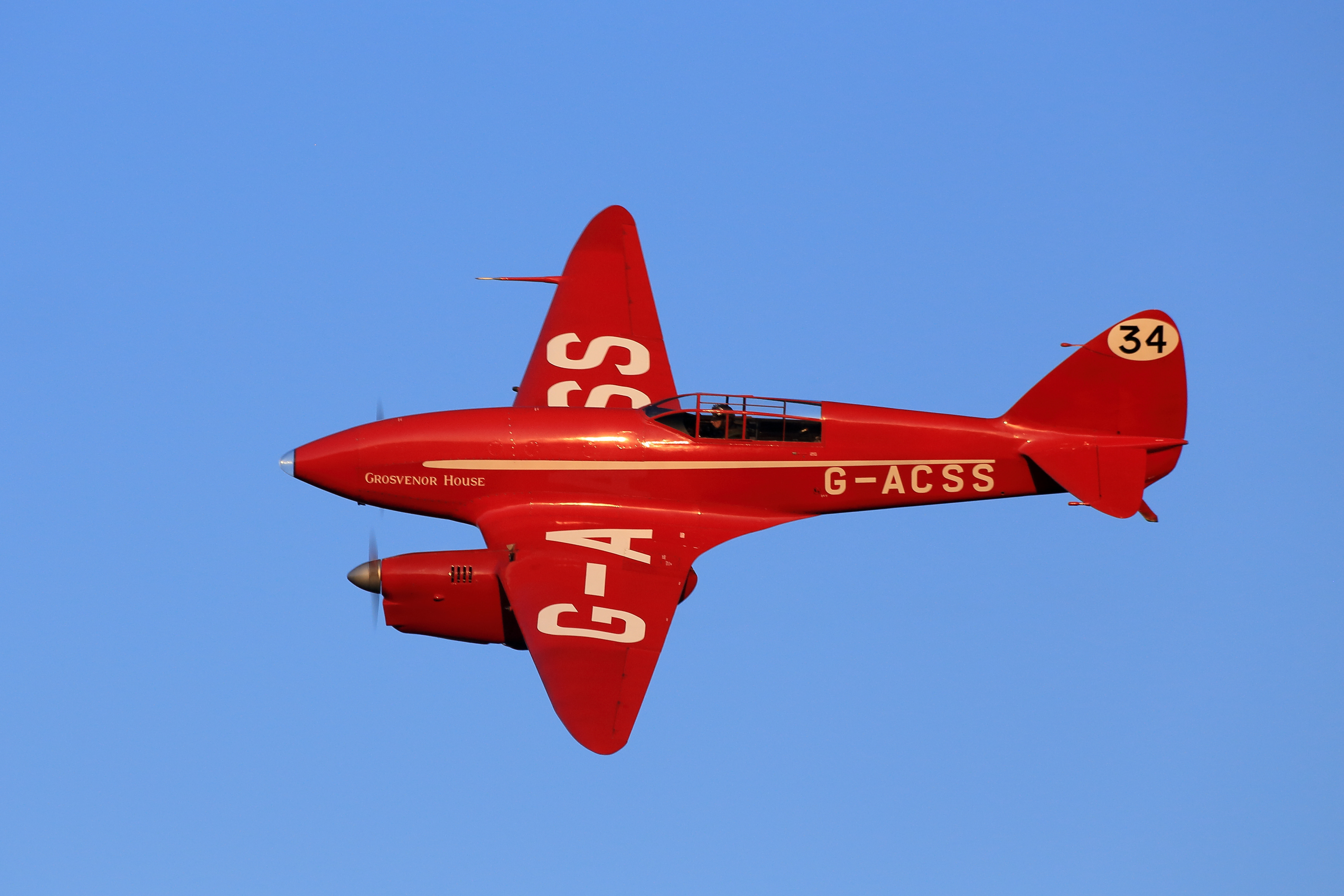What it's like flying the most beautiful aeroplane in the world
DH.88 Comet Pilot Review
Credit: Nick Blacow via Shuttleworth
Tucked away in a gorgeous corner of the Bedfordshire countryside in East England, is the Shuttleworth Collection at Old Warden. I first visited it with veteran Horsa pilot, the irascible Joe Michie, in the 1990s, and immediately fell for the place. At this timeless location, some of the most wonderful flying aeroplanes can be seen, among them de Havilland’s DH.88, an interwar racer built for the 1934 England-Australia MacRobertson Air Race from the United Kingdom to Australia, which it won. Still flying today, the DH.88 is, for my money, the most beautiful aeroplane in the world, and any doubters I would invite to watch it flying in at an evening show. But do not be fooled by the DH.88’s good looks, it is not an easy aircraft to master. We spoke to Shuttleworth Pilot Dodge Bailey to find out what it is like flying the Comet.
What is the best thing about flying the Comet?
A certain satisfaction, not to say relief, when walking away from it after a flight.
..and the worst?
Not sure there is a ‘worst’.
What is visibility like from the cockpit?
The visibility depends on the weather, but the field of view was described by a test pilot in 1934 as ‘good except for forwards and downwards’! – Nothing has changed.
What handling quirks does it have?
Its stalling qualities are problematic. Its wing design results in the wing tips stalling before the inboard sections. In a full stall, the aircraft usually rolls sharply to a large bank angle – recovery may take several hundred feet. There is no pre-stall warning buffet, and its neutral longitudinal stability means little or no change in stick force or position as the stall is approached to cue the pilot that the aircraft is getting slow.
Talk me through start-up and take-off...
The Gipsy engines need manual priming at the nacelle before attempting a start. Electric starter motors are fitted, the right engine is usually started first. After start, the cylinder head temperatures continue to rise so one cannot accept much delay once the engines are running. Engine run-ups are done individually and include cycling the RPM levers, running on a single magneto, carb heat and a check of max RPM and idle. By the time these are complete the CHTs will be high, and take-off must occur within a few minutes, or one will have to shut down to avoid overheating. Taxying to runway is by unlocking the tail skid and using differential wheel brake and power. Weaving is essential to clear the area in front of the nose. Pre-take-off checks include setting two notches of flap and 3-4 notches of wheel brake. When lined up there is no view of the runway ahead only the edge lines. Recheck that the canopy is locked and lock the tailskid. Increase power, leading with the right throttle by about an inch. When rolling straight use full forward stick to raise the tail and check full throttle applied to both. The take-off attitude is critical because it is important to prevent the aircraft bouncing airborne before is has sufficient airspeed – the attitude is correct when the CHT gauges cover the end of the runway. The aircraft accelerates well once the tail is up and will get airborne in about 450 metres at about 80-90 mph. To avoid a tip stall do not pull the nose up – let it fly itself off. Safely airborne – brake the wheels and select gear up. Accelerate to 110 mph and select flaps up. Set climb power.
In terms of contingencies during the take-off, if it is necessary to abandon the
Keep reading with a 7-day free trial
Subscribe to Hush-Kit Aviation Newsletter to keep reading this post and get 7 days of free access to the full post archives.


